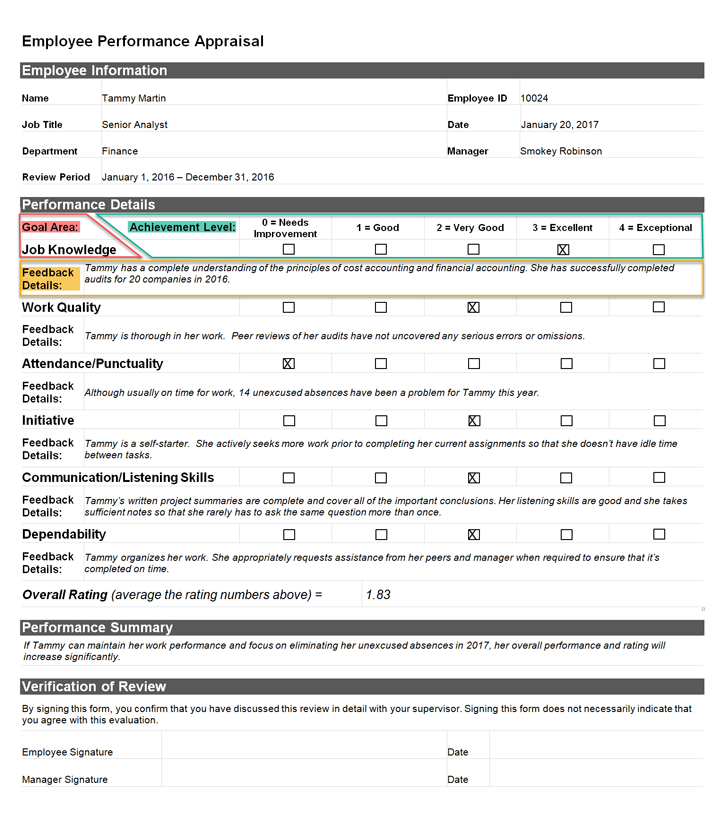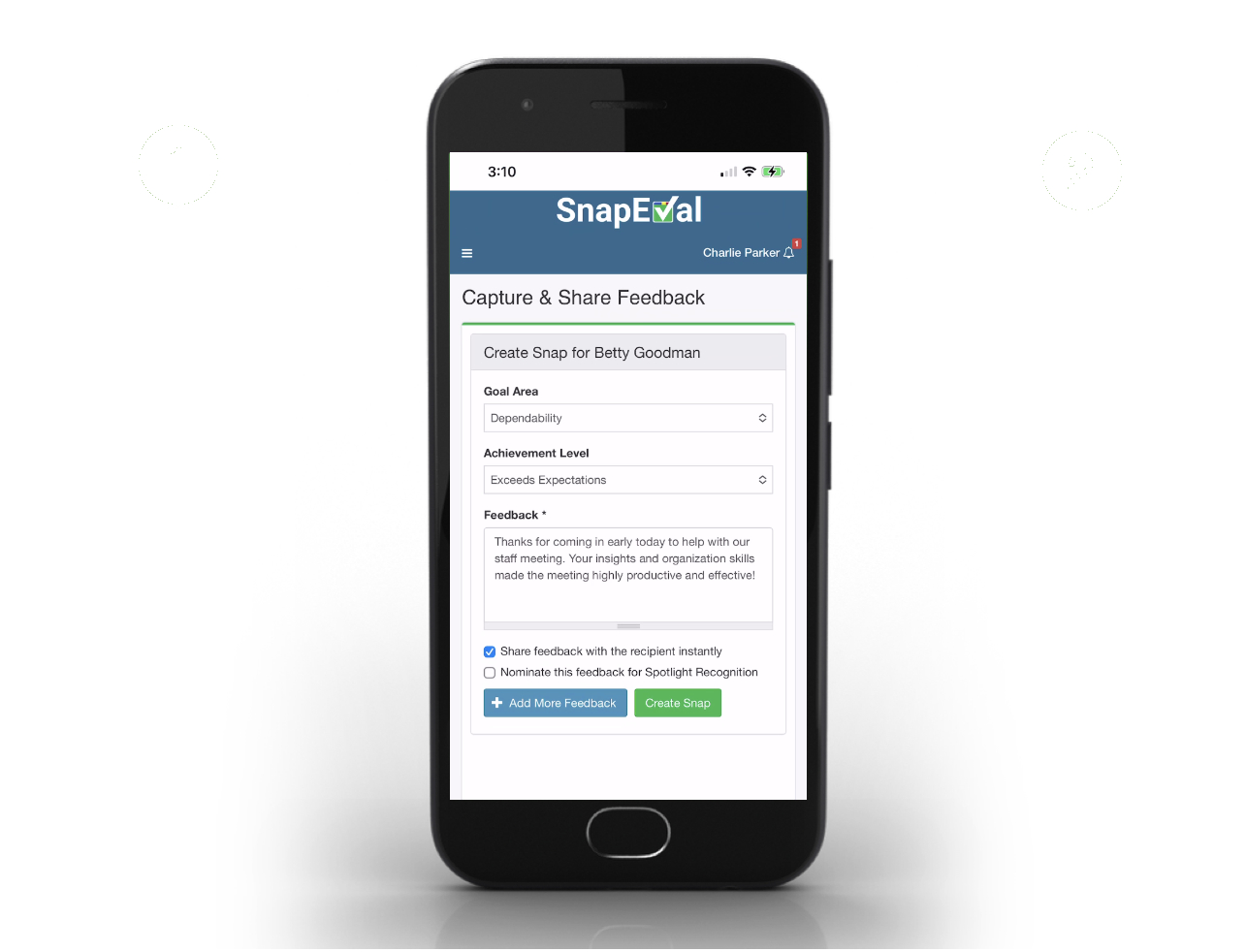
Changing Performance Management Systems Fail Mostly Due to Employee Resistance and Lack of Managerial Support.
Problems with traditional annual reviews and the search for a better approach
Most managers and employees are familiar with annual performance appraisal forms and reviews used in a traditional performance management system. However, the shortcomings of using annual performance reviews alone for employee performance feedback are well documented and include:
- Inability to provide employees with timely feedback
- Difficulty in accurately documenting an employee’s performance over the prior year
As a result, many organizations are exploring changing performance management systems with frequent or ongoing feedback to improve or entirely replace annual reviews.
For organizations using traditional annual reviews, or no performance management system, most of these alternative performance management systems introduce radically different approaches to capturing and sharing employee performance feedback. Some of these include detailed journaling, activity logging, responding frequently to system-generated questions, and direct feedback from peers.
These alternative approaches can impact managers’ and employees’ job workflows, significantly increase overhead, and introduce major changes to an organization’s culture.
High risk: Shifting corporate culture to deploy a new performance management system
Implementing an ongoing performance management system with a radically different approach to capturing and sharing employee performance feedback requires most organizations to make a large cultural shift.
It is well documented that changing an organization’s culture is extremely difficult. A McKinsey & Company study1 found that 70% of change initiatives fail and that the primary reasons for failure are employee resistance (39%) and lack of managerial support (33%). Similarly, a Towers Watson study2 found that only 25% of change management initiatives are successful in achieving long-term, sustaining gains.
Unfortunately, a 25% to 30% chance of successfully shifting an organization’s culture to adopt a radically different approach to performance management isn’t very encouraging for the organization, Senior Leadership, or an HR Professional’s career. Failure in this attempt would also make future consideration of an alternate performance management system even more problematic. Adding the time and cost for planning, implementing, and training – it’s very hard to justify taking this risk!
Low Risk: Minimize the initial cultural shift for ongoing feedback
A better approach is to deploy a performance management solution that provides all the benefits of frequent or ongoing feedback but doesn’t require a large shift in the organization’s culture – even for organizations starting with traditional or nonexistent performance management processes. This minimizes the cultural change risk as well as the cost for planning, implementing, and training.
The classic performance appraisal form (see Image 1) and its core elements of Goal Areas, Achievement Levels, and qualitative Feedback Details about employee performance are familiar to most managers and employees. The appraisal summarizes an employee’s performance over an extended period of time.
Image 1 – Classic Performance Appraisal Showing Goal Areas, Achievement Levels, and Feedback Details

By deconstructing the classic performance appraisal into performance feedback ‘snapshots,’ (we call them ‘Snaps’ as shown in Image 2) each of which has a Goal Area, an Achievement Level, and a text note with Feedback Details, managers and employees can enjoy the benefits of ongoing or frequent performance feedback without introducing a large shift in the organization’s culture.
What are some of the benefits of capturing and sharing feedback as Snaps?
- Snaps are intuitive for managers and employees because they are already familiar with Goal Areas, Achievement Levels and Feedback Details text notes used throughout traditional annual review forms. This minimizes training and the potential for cultural resistance in the organization when implementing ongoing feedback.
- A Snap can be captured and shared in seconds. Smartphones and a mobile app with voice to text support enables feedback to be captured and shared instantly, at any place and time. Because feedback is instantly captured at the time that employee performance is observed or thought of, it’s most accurate and isn’t forgotten.
- Each Snap can be shared immediately when it’s captured (perfect for a quick thank you or acknowledgement), or sharing can be deferred to a future point in time (most appropriate for developmental or complex feedback that should first be discussed in-person).
- A Snap’s Goal Area can be an organization-wide goal or value; or a cascading department, team, job function, or individual goal.
- Snaps can be captured and shared with each employee from their first day of employment. No more waiting weeks or months for feedback as a new employee.
- Snaps universally support employees in all job functions (knowledge, office, and manual workers) and across all industries. Employees do not need to have access to computing technologies or email to receive performance feedback.
- Snaps don’t interrupt normal job workflows with frequent system-generated questions, or increase their workloads with burdensome journaling or activity logging.
- Snaps are a complete solution for eliminating or improving annual reviews with ongoing feedback. Managers can easily aggregate individual Snaps into performance summary reports that accurately reflect an employee’s performance over time.
- Snaps provide HR Professionals with real-time, comprehensive visibility and access to performance levels and trends across the organization.
- Snaps provide critically important documentation for HR Professionals in the event of a wrongful termination lawsuit or EEOC action.
- Inappropriate language filters automatically reject this content before it is incorporated into a Snap. The feedback creator and HR Professionals are notified about the rejected content.
- Based on criteria configured by an organization’s HR Professional, Snaps with potentially problematic feedback can automatically be queued for review and approval, so an HR Professional can proactively coach managers about the most effective ways to construct and deliver feedback before the employee receives it.
- Snap change audit logs and integrated reporting provide HR Professionals with access to all edits and updates to each Snap, and even access to all deleted Snaps.
- Advanced features such as 360 degree feedback, team feedback and external feedback can each be enabled incrementally, if and when desired. Advanced features can also easily be disabled incrementally. This enables very low risk, incremental cultural change over time!
Rather than attempting high risk cultural change by implementing a radically different approach to a performance management system, why not try an ultra-low risk Snaps-based approach by signing up for a FREE SnapEval account for your team?
I’m David Yeaple, VP of Business Development and Product Management at SnapEval, LLC. I’d love to get your feedback about this blog, our products, or anything else related to employee performance management. You can reach me at dyeaple@SnapEval.com or +1 585-414-5000.
1AIPMM (2013, September 27). 70% of Transformation Programs Fail – McKinsey. Retrieved from http://www.slideshare.net/aipmm/70-26633757. Slide 11
2Towers Watson (2013, August 29). Only One-Quarter of Employers Are Sustaining Gains From Change Management Initiatives, Towers Watson Survey Finds. Retrieved from https://www.businesswire.com/news/home/20130829005188/en/Only-One-Quarter-of-Employers-Are-Sustaining-Gains-From-Change-Management-Initiatives-Towers-Watson-Survey-Finds

